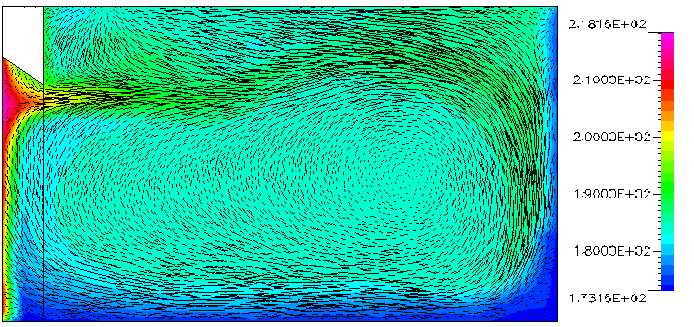We recently carried out a study to analyse the flow of liquid nitrogen around the panels of our space test chamber with the aim of enhancing its performance.Links with the Computational Engineering Group at STFC's Daresbury Laboratory allow us to take on complex problems. For example, the thermal analysis of the Beagle 2 Mars lander required a detailed understanding of the convective losses from the lander.
To verify the thermal design and thermal models of the lander, experiments were conducted at the Rutherford Appleton Laboratory on a full-sized model of the Beagle 2 lander in the 3 m diameter Space Test Chamber. The tests employed a fan to generate a wind inside the carbon dioxide-filled chamber, a powerful lamp to simulate the Sun and an independently-controlled thermal plate to simulate the temperature of the Martian surface.
As part of the design work for the experimental test programme, the Computational Engineering Group at Daresbury Laboratory performed a series of CFD simulations to provide a better understanding of the buoyancy-induced flow around the lander. The simulations estimated the convective heat losses for various combinations of lander temperature, surface temperature and atmospheric temperature.

For more information please contact:
RAL Space Enquiries
